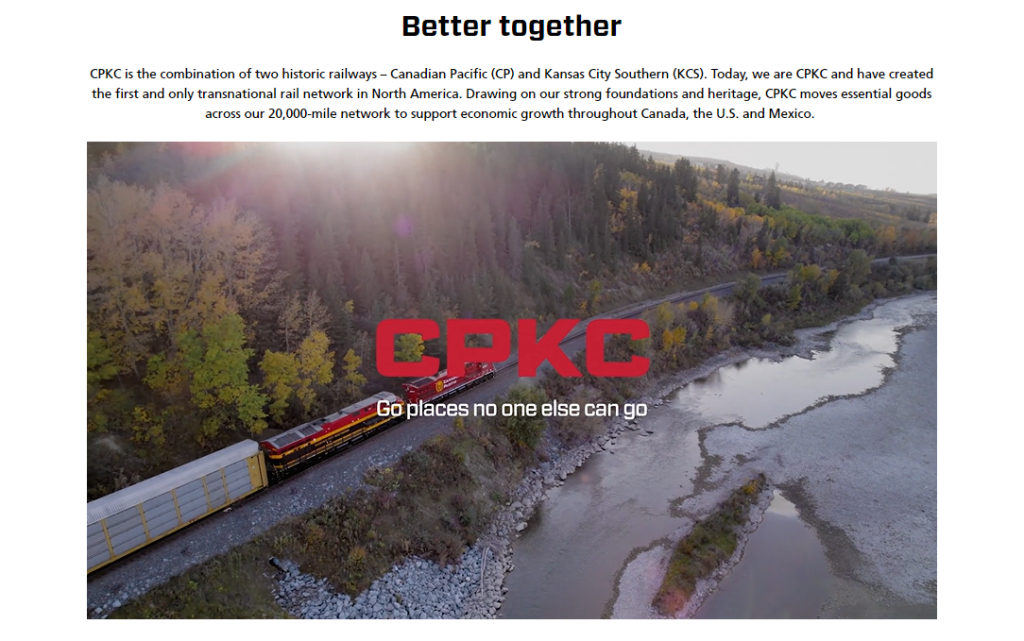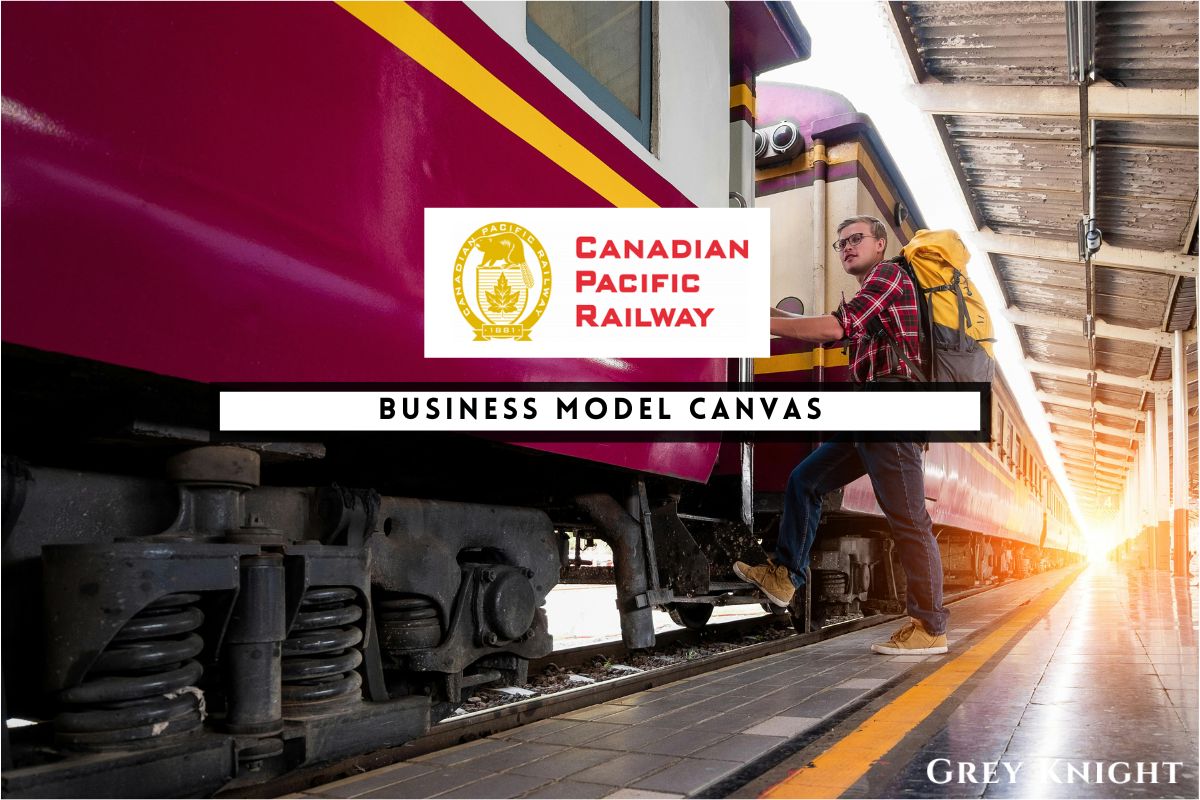Table of Contents
ToggleA Brief History of CPKC
Canadian Pacific Railway Limited, also known as CP Rail, is a historic Canadian railway company that played a significant role in the development of Canada’s transportation infrastructure.
The company was originally incorporated in 1881 as the Canadian Pacific Railway Company, with the goal of building a transcontinental railway that would connect Canada from coast to coast. The construction of the railway was a monumental engineering feat, with the company facing numerous challenges including harsh terrain, harsh weather conditions, and logistical obstacles. However, the railway was eventually completed in 1885, marking a major accomplishment in Canadian history.
Canadian Pacific Railway continued to expand its network, eventually becoming one of the largest transportation companies in Canada. In addition to its railway operations, the company also expanded into other areas such as shipping, hotels, and telecommunications, further solidifying its presence in the Canadian economy.
Over the years, the Canadian Pacific Railway has undergone various changes and reorganizations, including mergers with other railway companies and diversification into new industries. In 2001, the company officially changed its name to Canadian Pacific Railway Limited to reflect its broader scope of operations.
Today, Canadian Pacific Railway Limited continues to be a major player in the transportation and logistics industry, operating a vast network of railroads that span across Canada and into the United States. The company remains an important part of Canada’s economic infrastructure, transporting goods and passengers across the country and contributing to the nation’s overall prosperity.
Who Owns CPKC?
Canadian Pacific Railway Limited is owned by a diverse group of shareholders, including institutional investors, individual investors, and corporate entities. As of the most recent filings, the top 10 shareholders of Canadian Pacific Railway Limited are as follows:
1. T. Rowe Price Associates, Inc.
2. The Vanguard Group, Inc.
3. BlackRock, Inc.
4. Capital Group Companies, Inc.
5. Fidelity Management & Research Company
6. RBC Global Asset Management Inc.
7. TD Asset Management Inc.
8. CIBC Asset Management Inc.
9. Jarislowsky Fraser Limited
10. Letko, Brosseau & Associates Inc.
These shareholders collectively hold a significant ownership stake in Canadian Pacific Railway Limited and play a key role in the company’s governance and decision-making processes.
CP Mission Statement
Canadian Pacific Railway Limited’s mission statement is to be the safest, most innovative, and efficient railway in North America. They aim to provide reliable and sustainable transport solutions for their customers and communities, while also creating value for their shareholders. They are committed to operating with integrity and contributing to the economic prosperity and well-being of the regions they serve.

How CPKC Makes Money?
Canadian Pacific Railway Limited (CP) operates a successful business model that generates revenue primarily through the transportation of freight. The company earns money by charging fees for carrying a variety of goods, including coal, grain, and consumer products, across its extensive railway network. CP also provides additional services such as intermodal transportation, which involves moving shipping containers and trailers by rail, as well as the leasing of railway cars and track usage rights to other companies. Furthermore, CP has diversified its revenue streams by offering logistics and supply chain services, which contribute to its overall profitability. Overall, Canadian Pacific Railway Limited’s business model is centered around efficiently transporting goods and providing value-added services to customers, resulting in a stable and consistent revenue stream.
CPKC Business Model Canvas
The Business Model Canvas is a strategic management tool that provides a visual overview of an organization’s business model. It includes nine key components that help to identify and understand the different aspects of the company’s business operations. These components are Customer Segments, Value Propositions, Channels, Customer Relationships, Revenue Streams, Key Resources, Key Activities, Key Partners, and Cost Structure.
1. Customer Segments:
– Freight customers: Industrial and manufacturing companies that require transportation services for their products.
– Passenger customers: Individuals and tourists who use the railway for travel and commuting.
2. Value Propositions:
– Efficient and reliable transportation services for freight and passengers.
– Network connectivity and access to key markets in North America.
– Sustainable and environmentally friendly transportation solutions.
3. Channels:
– Direct sales and marketing efforts to attract new customers.
– E-commerce platform for ticket sales and freight booking.
– Partnerships with travel agencies and logistics companies to expand market reach.
4. Customer Relationships:
– Personalized customer service for freight and passenger clients.
– Loyalty programs for frequent travelers and long-term cargo partners.
5. Revenue Streams:
– Ticket sales for passenger transportation.
– Freight transportation fees.
– Rental of railway infrastructure to other companies.
6. Key Resources:
– Railway infrastructure, including tracks, stations, and terminals.
– Fleet of locomotives and rail cars.
– Skilled workforce and management team.
7. Key Activities:
– Train operations and maintenance.
– Customer service and logistics planning.
– Market research and strategic partnerships.
8. Key Partners:
– Government agencies for regulatory compliance and infrastructure development.
– Suppliers of locomotives, rail cars, and maintenance services.
– Industry associations and trade organizations for collaboration and advocacy.
9. Cost Structure:
– Infrastructure maintenance and development costs.
– Labor and employee expenses.
– Fuel and energy costs for train operations.
CPKC’s Competitors
Canadian Pacific Railway Limited faces competition from a number of other rail companies in the transportation industry. Some of the top competitors of Canadian Pacific Railway Limited include:
1. Canadian National Railway
2. Union Pacific
3. Norfolk Southern Corporation
4. CSX Corporation
5. Kansas City Southern
CPKC SWOT Analysis
Strengths:
1. Extensive rail network across North America
2. Strong customer base in various industries such as agriculture, energy, and automotive
3. Efficient and reliable transportation services
4. Strong financial performance and consistent growth
5. Key partnerships and alliances with other transportation companies
Weaknesses:
1. Dependence on economic conditions and commodity prices
2. Environmental concerns and impact of rail operations
3. Limited geographic reach compared to some competitors
Opportunities:
1. Expansion into new markets and industries
2. Development of new transportation technologies
3. Acquisitions and strategic partnerships for growth
4. Investment in sustainable and environmentally-friendly practices
Threats:
1. Economic downturns and fluctuations in commodity prices
2. Competition from other transportation companies and alternative modes of transportation
3. Regulatory changes and government policies impacting the rail industry
4. Labor disputes and potential disruptions to operations.
Concluding Analysis
In summary, the business model of Canadian Pacific Railway Limited is impressive in its ability to capitalize on both the transportation of goods and opportunities in real estate. With a strong focus on efficiency and sustainability, the company is well-positioned to continue its growth in the future. As an analyst, I am optimistic about the prospects for Canadian Pacific Railway Limited. With a solid business model and a commitment to innovation, I believe the company has the potential to thrive in the coming years. I look forward to watching its continued success in the industry.
Additional Resources
To keep learning and advancing your career, we highly recommend these additional resources:
Business Model Canvas of The Top 1,000 Largest Companies by Market Cap in 2024
A List of 1000 Venture Capital Firms & Investors with LinkedIn Profiles
Peter Thiel and the 16 Unicorns: The Legacy of Thiel Fellowship












